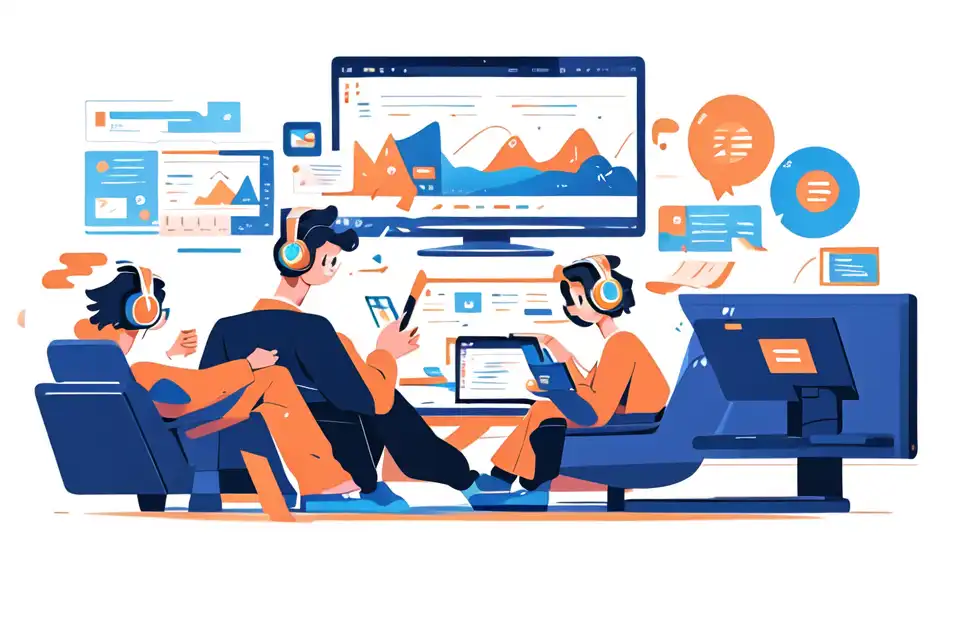Cookie Theft
Unlock the potential cookie theft with our comprehensive glossary. Explore key terms and concepts to stay ahead in the digital security landscape with Lark's tailored solutions.
Try Lark for Free
In today's digital age, the security of online assets is of paramount importance. Cyber threats continually evolve, posing challenges to businesses' cybersecurity measures. One such threat that demands attention is cookie theft. Understanding the nature of this threat and implementing proactive measures is crucial for safeguarding sensitive information and maintaining the integrity of online operations.
Discover how Lark's security and compliance solutions can empower your organization's cybersecurity needs.
Introduction to cookie theft in cybersecurity
Cookie theft, in the realm of cybersecurity, encompasses the unauthorized access and exploitation of web cookies stored on a user's device. These cookies, which contain valuable session data and personal information, are targeted by malicious actors seeking to compromise the security of websites and online platforms. Strengthening the defenses against this threat requires a holistic understanding of cookie theft, its implications, and effective preventive strategies.
How cookie theft works in cybersecurity
The Purpose of Cookie Theft in Cybersecurity
The primary motivation behind cookie theft is to gain unauthorized access to sensitive user information and exploit it for nefarious purposes. Malicious entities leverage stolen cookies to impersonate legitimate users, access privileged accounts, and conduct unauthorized transactions. This form of cybercrime poses a significant risk to individuals and businesses alike.
Practical Implications and Why It Matters
Illustrative Example 1: Financial Fraud
Consider a scenario where a cybercriminal gains access to a user's authentication token through cookie theft. With this token, the perpetrator can manipulate financial transactions, leading to significant monetary losses for the victim.
Illustrative Example 2: Identity Theft
Through cookie theft, malicious actors can harvest personal data, including login credentials and personal identifiers, to orchestrate identity theft schemes. This illicit activity can have far-reaching consequences for the affected individuals and organizations.
Illustrative Example 3: Corporate Espionage
Infiltrating corporate networks through cookie theft enables cybercriminals to steal proprietary data, compromising the competitive edge of businesses and undermining trust in the digital marketplace.
Best Practices When Considering Cookie Theft in Cybersecurity and Why It Matters
Detailed Example 1: Implementing Secure Cookie Attributes
Adopting secure cookie attributes such as 'Secure,' 'HttpOnly,' and 'SameSite' can enhance the resilience of cookies against theft and unauthorized access. These attributes bolster the encryption and integrity of session data, making it more challenging for malicious actors to exploit.
Detailed Example 2: Multi-Factor Authentication (MFA)
Implementing MFA as an additional layer of security fortifies the authentication process, mitigating the risks associated with compromised cookies. MFA introduces multiple verification steps, significantly reducing the likelihood of unauthorized access, even if cookies are compromised.
Detailed Example 3: Regular Security Audits and Updates
Conducting periodic security audits and staying abreast of the latest security updates and patches is crucial to fortify defenses against evolving cookie theft techniques and emerging vulnerabilities.
Actionable tips for managing cookie theft in cybersecurity
Best Tip 1: User Education and Awareness
Educating users about the risks of cookie theft, emphasizing the importance of secure browsing practices, and promoting vigilance when sharing personal information online can significantly mitigate the potential impact of cookie theft.
Best Tip 2: Encrypted Communication Channels
Leveraging secure and encrypted communication protocols, such as HTTPS, and consistently promoting encrypted network connections fortifies the security of session data and impedes unauthorized interception of cookies.
Best Tip 3: Implementing Real-Time Monitoring and Response Mechanisms
Deploying robust monitoring tools and establishing proactive response protocols enable swift detection and mitigation of cookie theft incidents, minimizing the associated damage.
Related:
Lark | Trust & SecurityLearn more about Lark x Cybersecurity
Related terms and concepts to cookie theft in cybersecurity
Understanding the associated terminology and concepts is integral to comprehensively addressing the threat of cookie theft in cybersecurity:
- Cross-Site Scripting (XSS)
- Session Hijacking
- Data Encryption Standards
Conclusion
In conclusion, the threat of cookie theft necessitates proactive and vigilant measures to fortify cybersecurity defenses. Embracing the best practices, raising awareness, and staying abreast of the evolving cybersecurity landscape are imperative for mitigating the risks posed by this pervasive threat. Continuous adaptation and a proactive approach to cybersecurity are paramount in safeguarding valuable online assets against the perils of cookie theft.
Related:
Lark | Trust & SecurityLearn more about Lark x Cybersecurity
Examples of cookie theft in cybersecurity
Illustrative example 1: financial services breach
Illustrative example 1: financial services breach
A financial institution experiences a breach wherein cybercriminals exploit cookie theft to gain unauthorized access to customer accounts, resulting in substantial financial losses and reputational damage.
Illustrative example 2: e-commerce identity theft
Illustrative example 2: e-commerce identity theft
In an e-commerce environment, cookie theft leads to the unauthorized retrieval of customer credentials, enabling fraudsters to make fraudulent purchases and compromise the personal information of numerous individuals.
Illustrative example 3: corporate data compromise
Illustrative example 3: corporate data compromise
A corporate network falls victim to cookie theft, culminating in the infiltration of sensitive business data, including intellectual property and proprietary information, jeopardizing the organization's competitive standing and operational integrity.
Tips for managing cookie theft in cybersecurity
Step-by-Step Guide: Implementing Secure Cookie Attributes
- Evaluate the existing cookie attributes and identify areas for improvement.
- Integrate the 'Secure' attribute to enforce secure transmission of cookies over HTTPS, mitigating the risk of interception.
- Implement the 'HttpOnly' attribute to restrict client-side script access to cookies, bolstering their resilience against client-side attacks.
- Configure the 'SameSite' attribute to specify cookie usage restrictions, enhancing the security of session data transmission.
Do's and Dont's of Cookie Theft Prevention
| Do's | Dont's |
|---|---|
| Regularly update and patch software | Neglecting to monitor suspicious activity |
| Implement multi-factor authentication | Disregard the importance of user education |
| Encrypt communication channels | Overlook the significance of secure cookie attributes |
| Conduct regular security audits | Ignore the implementation of real-time monitoring mechanisms |
Related:
Lark | Trust & SecurityLearn more about Lark x Cybersecurity
Discover how Lark's security and compliance solutions can empower your organization's cybersecurity needs.








